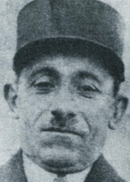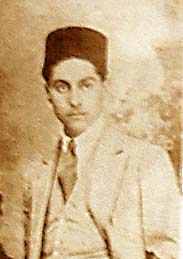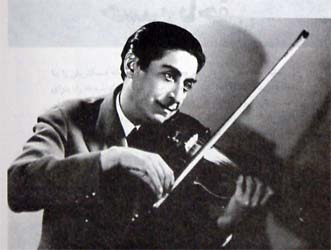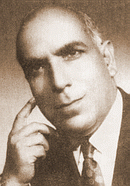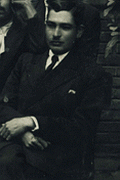![]()
A Brief History of Persian 78 rpm shellac Records
by: Amir Mansour
There are about 6000 sides of recordings by Iranian artists about 950 sides belongs to pre World War 1 near to 350 released as one sided discs, about 2300 sides between two World Wars and about 2750 sides post World War 2: (Chart of Persian recordings by Iranian artists in Iran and abroad containing an estimate of their records ) Persian and Persian-Tartar recordings by Indian, Afghani, Turk & Caucasian artists have not considered in the chart. All of known Persian recordings on 78 rpm records are sorted below by the date of recording and you can see their labels by clicking on hyperlinks. Links to "Discography" are added in last updating and contains the last provided data through different sources especially the records.
1899 First Persian records were taken in London by Emile Berliner's Gramophone co. (poems of Hafez, Ferdowsi and Zahir e Faryabi by voice of an Indian called Dr. Ahmad) on 7" without paper label records.
1902 Recordings in Baku and Tiflis (Russia) by Emile Berliner 's Gramophone co.(7" & 10" without paper label) and Gramophone and Typewriter Ltd paper label (7" & 10") records as Persian or Persian tartar, extending to 1915 by Gramophone Company (Rec1, Rec2, Rec3, Rec4).
1904 Some 37 Persian recordings had taken by Indian artists like Zeban Jan, Banni Jan, Keeti Jan, Miss Mahmuda Jan, Agha Ameer for 7" Gramophone Record. Also mentioned singers and others like Gauhar Jan, Wazir Gan, Miss Masiti Jan, Kali Jan, etc. for 10" & 12" records of Gramophone Co. in India and up to 1908 (See: Discography) and it has extended up to 1920's by Zohra Bai, Janki Bai, Achhan Bai and others, according to The Record News, journal of SIRC and Michael Kinnear's book; The Gramophone Company's first Indian recordings 1899 - 1908.



(from left: 1.Mozaffareddin Shah's permission to Gramophone co. dated last days of 1905, "Jelveh honar dar asnad e melli, p214 2. label of Mozaffareddin Shah's speech recorded January 16,1906 3. Certificate of John Tyler, American Vice Consul General in Tehran for Shah's records "Ganj e sookhteh, p36)
1906 The first recording session in Tehran in last days of 1905 up to 1906 mid January and 3 recorded speeches of Mozaffareddin Shah, king of Iran (with a rectangular label and signature of Shah on record) by G&T on GRAMOPHONE RECORD (7"), GRAMOPHONE CONCERT RECORD (10") and GRAMOPHONE MONARCH RECORD (12"), one-sided, black with gold writing angel label, manufactured in Hanover (Germany) and first reproducing in Riga (Russia) in 1908 and the second in 1914 as two-sided discs in Riga (See: Discography) (see: labels).

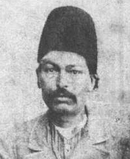
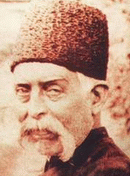

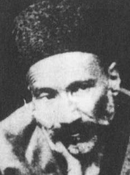
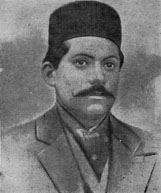
(Some artists of 1906 records, from left: Bagher Khan-Kamancheh, Agha Mirza Hosseingholi-Tar, Mirza Abdollah-Tar, Nayeb Assadollah-Ney, Hassan Lahni-Vocal)
1907 Agha Mirza Hosseingholi and four other Persian artists (Seyed Ahmad Khan - vocal, Mirza Assadollah Khan - tar & santoor, Bagher Khan - kamancheh, Mohammad Bagher - zarb) invest for "KHORSHID RECORDS". They have Recorded in Paris on SOCIETE ANONYME FRANCAISE ONDOGRPHIQUE label, released on EDEN PARIS double-sided 27 cm, black & white illustrated label and 25 cm GLOBOS RECORD of German Globophon G.m.b.H Hannover. Very few of these records are known so it would be very hard to complete its "Discography".
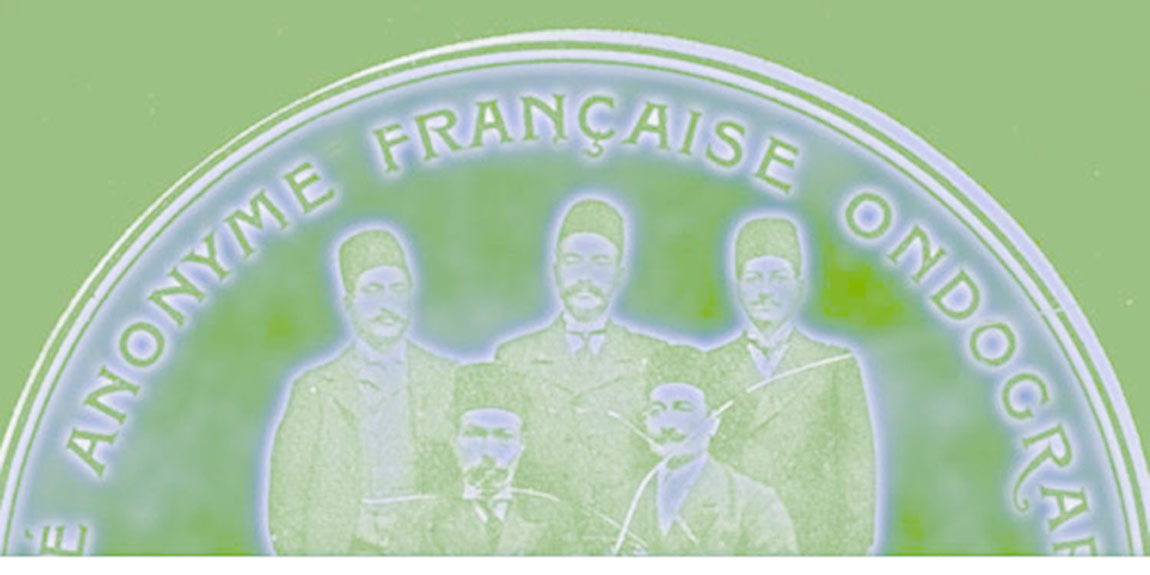
(From left: Bagher Khan, Agha Mirza Hosseingholi, Mirza Assadollah Khan, Seyed Ahmad Khan, Mohammad Bagher)
1909 Eight Persian artists (Seyed Hossein Taherzadeh - vocal, Rezagholi Khan - vocal & zarb, Darvish Khan -tar, Bagher Khan - kamancheh, Mirza Assadollah Khan - tar & santoor, Hossein Khan - violin, Akbar Khan - flute, Habibiollah Khan - piano) in London recorded for Gramophone co. and released as 10" GRAMOPHONE CONCERT RECORD and 12" GRAMOPHONE MONARCH RECORD, black with gold writing and angel label records, most of them one-sided pressed at Hayes (England). The records reproduced several times in Russia, India and England. (See: The daily Discography)
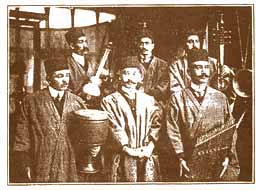
(From left: Rezagholi Khan, Darvish Khan, Tajerzadeh, Akbar Khan, Bagher Khan, Mirza Assadollah Khan)
1912 The second recording session in Tehran and first female recordings in Iran by Gramophone co. just as 10" CONCERT RECORD "GRAMOPHONE", first pressing at Riga (gold writing, brown label). Second pressing at Riga was colored angel and gold writing on AMOUR GRAMOPHONE RECORD label in 1914. Reproducing in Calcutta India in 1916 on AMOUR GRAMOPHONE RECORD the same as Russian records and in 1918 & 1920 on HIS MASTER'S VOICE black label and gold writings. (See: Discography)
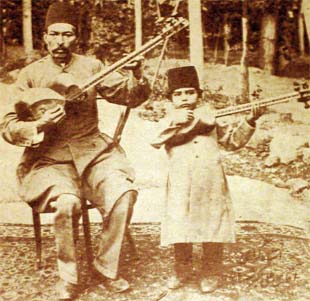
Agha Mirza Hosseingholi & his son Agha Aliakbar (Shahnazi), main artists in 1912 recording session
1914 Five Persian artists (Abolhassan Khan - vocal, Taherzadeh - vocal, Abdollah Khan Davami - vocal & zarb, Darvish Khan -tar, Bagher Khan - kamancheh) recordings in Tiflis (Tbilisi) released as 10" pink or dark green with black writing MONARCH RECORD label, probably pressed in Germany. First world war and political conditions of Iran stopped recording in Tehran for about 12 years.
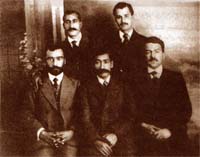
(From left: Taherzadeh, Bagher Khan, Darvish Khan, Abdollah Khan, Abolhassan Khan. "Ba zamzameh hezar dastan", p239)
1926 The Gramophone co. restarted recording in Iran after WW I by common works of Qamar-ol-molook Waziri , the most important Persian female singer, Molook Khanom (below right; of Salnameh by A. Miralinaghi) and Morteza Khan Neydavood, a famous composer and Tar player, introducing His Master's Voice plum dog label in last series of its acoustic records, produced in Hayes (England).

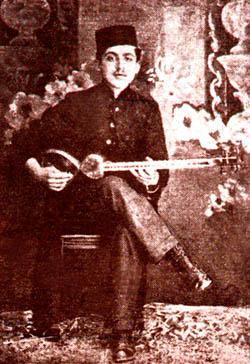
.jpg)
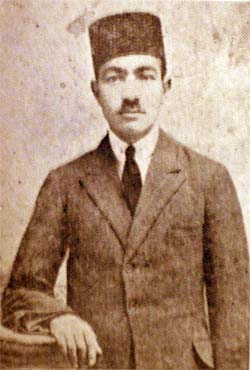
Qamar-ol-molook Waziri Morteza Khan Neydavood Molook Khanom Ibrahim Khan Mansouri
1927 POLYPHON of Germany starts recording in Iran in last months of 1927 and keeping on up to February of 1928 when signs for 3 years by most popular Persian female singers, Qamar and Molouk khanoum beside many other artists like Aliakbar Khan Shahnazi, Taj Isfahani, Hosseinali Khan Nakissa, Arsalan Khan Dargahi and Hossein Khan Yahaghghi. Records are manufactured in Polyphon MusikWerke A.G. Berlin as 27cm high quality red labels with gold writings (See: almost complete Polyphon 1927 Discography). The first Odeon records of Persian operettas probably is recorded in this year in Tehran and produced in Germany as 27cm red paper with gold writing label. Also, some comic Persian records has been recorded by HMV in Baghdad and released as 10" plum dog label. Also there are some Persian recordings on BAIDAPHON 27 cm B084000 series, red labels, recorded in Baghdad by a singer named Hossein khan Tehrani (See: Non complete Discography) and before it a few Baidaphon B083000 series by another Iranian singer named "Hashem Irani".
Hosseinali Khan Nakissa Arsalan Khan Dargahi Hossein Khan Yahaghghi Taj Isfahani Aliakbar Khan Shahnazi
1928 Competition between British and German companies and HMV is testing its first electrical Persian records by artists like Iran Khanom, Salim Khan in his 2nd time of recording for HMV, Parvaneh Khanom, Habib Samaey & Adib e Khonssari and Columbia Graphophone co. Ltd. with its first Persian recordings (western electric) in last days of this year appears beside HMV and release COLUMBIA 10" and 12" dark green papers with gold writing and producing of Wandsworth (England) and HMV pressing as usual in Hayes. "PATHE" and "Pathe Actuelle" needlecut Persian records of Iranoddowleh, Ibrahim Khan Mansouri, Abdollah Hijazi and others (without run-off groove) maybe recorded in this year as one of last series of British Pathe. 25 and 27 & 29 centimeter Persian Pathe records have green or red papers and gold writing on the label.
.jpg)

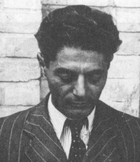
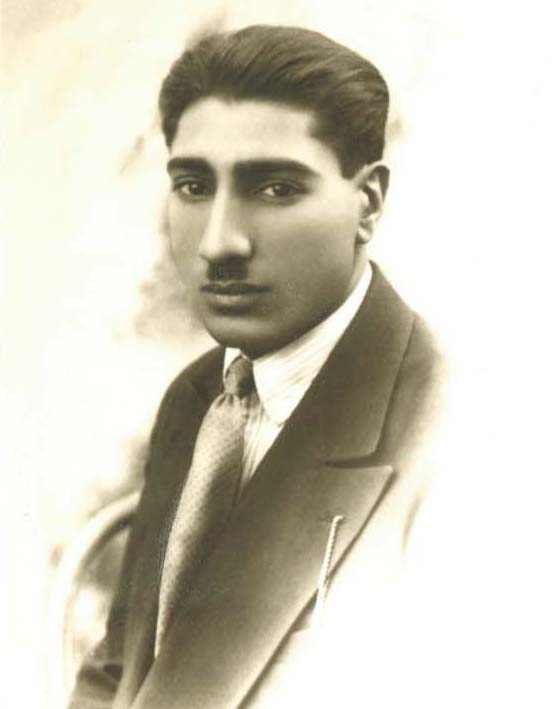
Salim Khan (Soleiman Amirghassemi) Parvaneh Khanom Habib Samaey Adib e Khonssari
1929 Release of first electrically records of POLYPHON, 27cm gold or yellow with black writing. HMV also has two sessions of recording in Tehran in January and October and its first formal issue of Persian electrical records is reported in a Persian catalogue, as attachment to general catalogue of 1930.
1930 BAIDAPHON label appears in Iran after some Persian recordings in Baghdad, by recording many songs and between them second Seri of songs composed by AliiNaghi Waziri and performances of "Madresseh 'Aali Moosighi" orchestra and their main vocalist, Roohangiz. These records have golden papers with black writings and gazelle trade mark.(See: Discography)
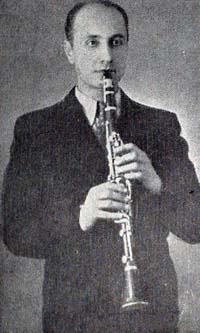

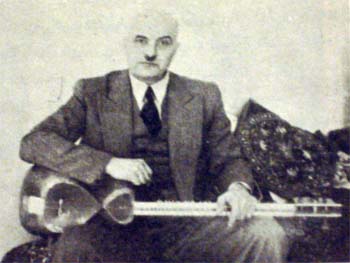
Waziritabar Roohangiz Alinaghi Waziri
1932 The second series of BAIDAPHON recordings most of them were issued on another label of Carl Lindstorm, PARLOPHON. PARLOPHON records are made in Germany with royal blue and gold writing or gold with black writing labels. Some of Recordings of Baidaphon in 1930 reproduced on Parlophon green labels.
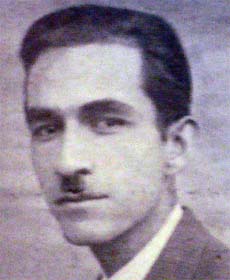




 Rezagholi Mirza
Zelli
Nayyer Aazam
Roomi
Moshir Homayoon
Roohbakhsh
Moosa Maroofi
Rezagholi Mirza
Zelli
Nayyer Aazam
Roomi
Moshir Homayoon
Roohbakhsh
Moosa Maroofi
1933 Last coordinated recordings of HMV and COLUMBIA before the second World War by Roohangiz Khanom, Molook Khanom, Nayyer Aazam Roomi , Badizadeh and many other artists for HMV and Rezagholi Mirza Zelli, Roohbakhsh, Loretta, Moosa Maroofi and Moshir Homayoon (top right) for COLUMBIA. The record labels are the same as previous ones. The world financial crisis in 1929 caused to merge the great recording companies as EMI and changing in their business plan stoped recordings by all of companies in Tehran for 14 years.
1936 Javad Badizadeh- vocal, Abolhassan Saba- violin, Ismayyl Mehrtash- tar and Farhad Motamed- piano take part in a trip to have a recording session in Beirut (Lebanon) and Aleppo (Syria) and then joining Madam Pari Aghababof- vocal, cause to produce 10" with gold writing on green paper labels of SODWA.
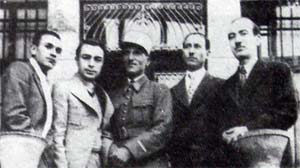
(From left: Badizadeh, Motamed, conductor of French army music band in Aleppo, Mehrtash, Saba. "Memories of Seyyed Javad Badizadeh (1903-1980)", p222)
1937 52 sides on ODEON 10" royal blue with gold writing recorded by Badizadeh- vocal, Sateri- violin and a German orchestra in Berlin with the first special designed sleeves of Persian records (See its Discography & labels). Some selected recordings of BAIDAPHON (PARLOPHON) in Baghdad and Tehran reissued as red ODEON to make a popular catalog when Germany has a special political attention to Iran.
1939 Second Seri of SODWA recordings in Beirut and Aleppo of Taj Isfahani- vocal, Badizadeh- vocal, Molook khanom Zarrabi- vocal, Malakeh Boroomand- vocal (below center), Saba- violin, Tataii- violin (below left), Mortaza Mahjubi- piano (below right), Haigo- kamancheh, aushood A Rostamian- tar and oud player Sami mallah. Released as yellow, gold or pink with black writing. There are records of Persian artists on 10" blue with gold writing Iraqi label NEAYEM RECORD, maybe recorded and produced in Baghdad (See: Discography).
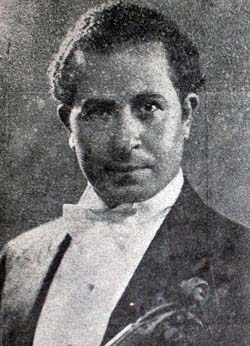



Hosseingholi Tatayy Malekeh Boroomand Morteza Mahjubi
1946 The first and second recording session of Persian artists in Bombay (India). The first by Badizadeh- vocal, Zahedi- vocal & zarb, Khaledi- violin, Parvaneh- tar, Kamoossi- tar and four Indian musicians (on piano, sax, trumpet & clarinet) appears as YOUNG IRAN 10" blue or black & white label manufactured by The National Gramophone co. Ltd. of Bombay after more than 6 months they were performing in Persian broadcasting of Delhi Radio which was managed by British managers in the conditions of after the WW2. The second by N. Minbashian, F. Minbashian and Ken Mac band for a private colored label, named DELBAR (just written in Persian) with attractive sleeves were manufactured by The National Gramophone co. Ltd. of Bombay.
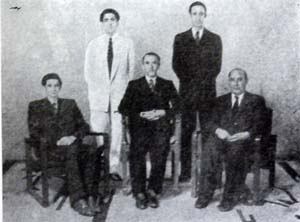
(From left: Khaledi, Kamoosi, Badizadeh, Zahedi, Parvaneh. in New Delhi. "Memories of Seyyed Javad Badizadeh (1903-1980)", p298)
1947 The third recording sessions in Bombay by Delkesh- vocal, Khaledi- violin, Zarrinpanjeh- tar and Zahedi- zarb for NAVA-YE-IRAN colored label 10" records, manufactured by The National Gramophone co. Ltd. of Bombay happened (See: Discography) and its fourth session for TEHERAN label beside restarting of EMI labels coordinated recordings in Tehran. HMV recordings of artists like Delkesh (below left), Banan (below center), Roohangiz, Fattaneh (below right), Morteza Ahmadi and others pressed at Hayes on green labels with gold writing. COLUMBIA by artists like Ghanbari, Khatibi, Mohseni, . . .and green labels as like as HMV (See" Catalog). ODEON gold writing on royal blue was made in England by recordings of Ghassem Jebeli, Bahram Siar, Saadatmand Qumi and many others.
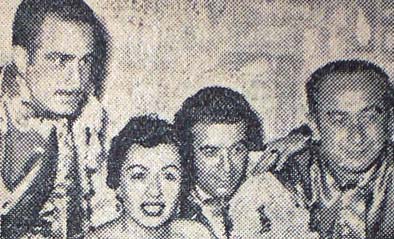


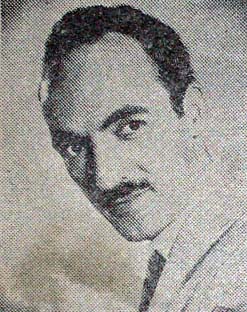
Delkesh & her orchestra Gh. Banan Fattaneh H. Ghanbari
1948 Just five records (10 sides) with red & white writings, has been recorded in U.S.A. by Jamshid Sheibani and produced on PERSIAN RECORDING CO. label in New York and released in an special album containing a complete list of the records. The first records of local labels, MUSICAL RECORDS, SHAHERZAD and ROYAL. All of their recordings were taken in Tehran and pressed in England, some of them by ORIOLE and their production was kept on up to 1960 with some changes in design of mentioned labels and the manufacturers (See: Royal 78s Discography).
1950 Recording and pressing of "Hymne Iranien" by COLUMBIA in Pakistan. HMV dark plum dog label records of Mrs. Nava- vocal and Mansouri orchestra has probably been recorded and produced in Pakistan about 1950 too.
1951 Starting to record many Persian movie songs for MUSICAL RECORDS, SHAHERZAD and ROYAL continuously. Main artists in this era are Delkesh, Manuchehr Shafiee, Parvaneh, Banu Shapoori (Pooran), Mahwash, Shahin & Aafat. (Rec1, Rec2, Rec3, Rec4, Rec5, Rec6, Rec7, Rec8)

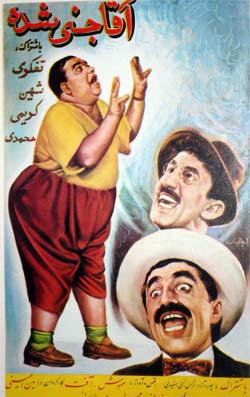

1952 Azeri songs recorded by artists from Tabriz (Iran) on a new colored label named MUSICAL TABRIZ as a part of records of the Musical Record Company.
1955 Reproducing some imported Arabic and Indian recordings by Royal (Royal Trading Co.) on ARABPHONE black or blue label with white (silver) writings to be exported.
1956 Reproducing some Arabic records of Mohammad Abd-el-Wahab and Omme Kolsoum on 10" navy with blue writing M.R.C label (another label of Musical Record Company).
1958 Reproducing of some Persian best seller records by Gramophone Co. of Karachi in Pakistan on a red label named ABDORRAHMAN.
1950's Reproducing some of Iranian popular songs on Torero and MRC (Musical Record Company) label 78 rpm records in Palestine.
1950's/60's MELODIA of CCCP starts to record and produce many black and white label records of Afghan artists (Shir Mohammad Qaznavi, Yaqub qassemi, Madadi, Kabootar, Gila, Xaland, etc.) for Kabul radio during next 10 years, some of them in Persian.
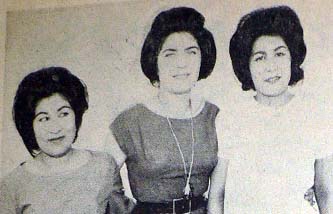
Afghan artists: Rakhshaneh, Gila and Xland
* Dates are estimated
Any comments would be appreciated. Contact us
